Using Assessment Data to Develop a Throwing Program
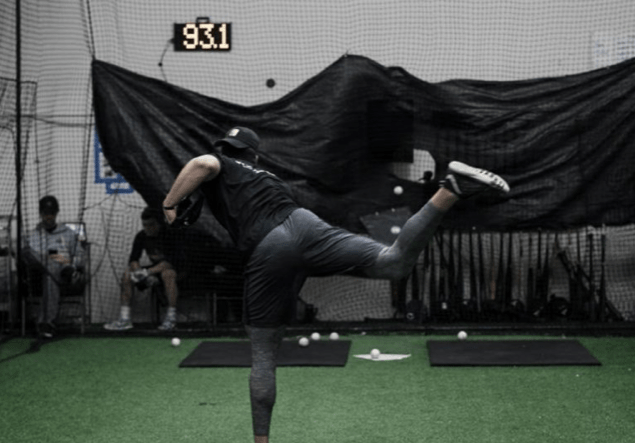
One of the greatest benefits our assessment provides is how it better informs our staff when developing and implementing throwing programming.
It is one thing for an athlete to have all of his assessment data at his fingertips and to understand precisely what was uncovered. But it is another to actually identify the specific programming needed to attack those inefficiencies.
In a previous post, we discussed how we utilize the assessment and weight room to make movement changes. We will now discuss how we design throwing programming to create changes.
An invaluable piece of our assessment process is the motion-capture report our biomechanics lab generates. This gives us distinct kinematic positions, sequencing, and velocities for each athlete as well as joint kinetics. Our training staff can then use this data to better construct specific throwing programming designed to improve mechanical efficiency and positively impact on-field performance.
Truth data is important because it strips away stylistic nuance while giving us objective feedback using basic physics and biomechanical principles. Using our motion-capture lab is the ideal way not only to inform training programs but also can be leveraged in the following weeks or months to evaluate progress.
To explore this further, we can look at an athlete who trained with us this past off-season.
The Athlete
This particular athlete arrived at the facility following the conclusion of his first professional season in September to get assessed. He also went through a motion-capture retest shortly before leaving for spring training. This made for a unique opportunity to see what changes occurred and to discuss what throwing programming was designed based on the initial assessment findings.
His first season of professional baseball saw his velocity drop dramatically and performance suffered a bit because of this. At the season’s end, his average fastball velocity for the year was 88.6 mph, which is a far cry from what he was used to during his successful college career.
Initial Motion Capture Findings
Taking a look at the athlete’s initial biomechanics assessment data, we saw a few significant inefficiencies in both the upper and lower half.

We first see that his arm wasn’t deploying very efficiently. Having 50 degrees of elbow flexion at foot contact and a maximum average of only 82 degrees indicates that his elbow never gets inside 90 degrees. When elbow extension happens too early force is not applied efficiently.
This minimal elbow flexion is also usually linked to low scap retraction at foot contact. Scap load or scap retraction is quantified in our motion-capture report above by horizontal shoulder abduction. It is a measurement of the angle between the humerus and the torso in what would be the transverse plane.
This athlete only gets roughly 4 degrees of shoulder horizontal abduction (scap retraction) at foot contact, which is well below average. While kinematic positions themselves may not necessarily have a strong correlation with velocity, they can influence kinematic velocities and joint kinetics. In other words, the ability to move fast, apply force properly and transfer energy efficiently are all keys to throwing hard and that is, in part, made possible by getting in good positions.
Finally, we see the arm is late getting up and that shoulder abduction is a bit low at foot contact: 77 degrees. It then climbs up aggressively to 95 degrees at ball release. Combined with the low scap retraction, this means his throwing arm is very extended at foot contact and his elbow climbs quickly into ball release. It may also mean that his arm is spending energy traveling up instead of to the plate.

Looking at the lower half, we see his pelvis is pretty closed at foot strike, as indicated by the pelvis angle being -0.51 degrees. If the lead leg hits without the pelvis being open enough, the athlete may not be able to maximize the lead leg’s ability to facilitate rotation. This can negatively impact pelvis rotational velocities, which potentially hurts the rotational velocities of the segments up the chain.
Here is what his initial assessment looked like:
Initial Assessment notes:
Primary concern: Arm action has room to improve.
– Elbow never gets inside 90 degrees (max 82 degs of flexion, early forearm flyout)
– limited elbow flexion linked to low scap retraction at foot plant (10 degs)
– landing closed with hips. pic.twitter.com/KbEkTkpmlm— Anthony Brady MS, CSCS (@BaseballFreak_9) March 1, 2019
Programming
Throwing programming was built around the information produced from the athlete’s initial assessment with a heavy reliance on the motion-capture data.
The obvious performance need was to increase fastball velocity. Increasing fastball velocity would be one of the most impactful ways to improve on-field results. However, to achieve that we needed to address the aforementioned movement issues.
First Training Block – Strength/Mobility Focus
We did see some range-of-motion and strength deficits were present. A lot of these are typical for an athlete after a long season, but deficiencies in strength and mobility certainly could have been contributing to some of the suboptimal movements. This is why dedicating specific training time to restoring range of motion along with focused strength work is so important early on—especially before moving into higher volume or high-intent throwing.
We took about two and a half weeks off from all throwing before moving into another two weeks of recovery-only work. This period involved low RPE pivot pickoffs and reverse throws with Plyo Ball ® and some light catch play.
Second Training Block – Arm Action Focus
After taking time off and knowing we needed to insure fitness levels and work capacity were built back up appropriately, the following five weeks were designed to on-ramp the athlete and start patterning a more efficient arm action.
This phase was filled with hybrid days primarily. This meant the athlete performed all of the Plyo Ball ® drills at moderate intensity and eventually 90% RPE. Most long toss days did not include any type of a compression phase initially. As we got closer to the conclusion of this training block, they were introduced during his 90% RPE work.
We made some modifications to this athlete’s Plyo Ball ® work in an effort to influence the mechanical changes we were looking for. The first of which was eliminating rockers and replacing them with a step back. During rockers, he just wasn’t putting himself in a great position. His lead knee was tracking forward and he pushed into early hip extension. We made the decision that a step back was a better fit as it allowed his lower half to sequence better.
We also cued him to think about the lower half working more rotationally during this drill to encourage the pelvis to get open more.
The other modification we made to his Plyo Ball ® work was adding scap-retraction throws.
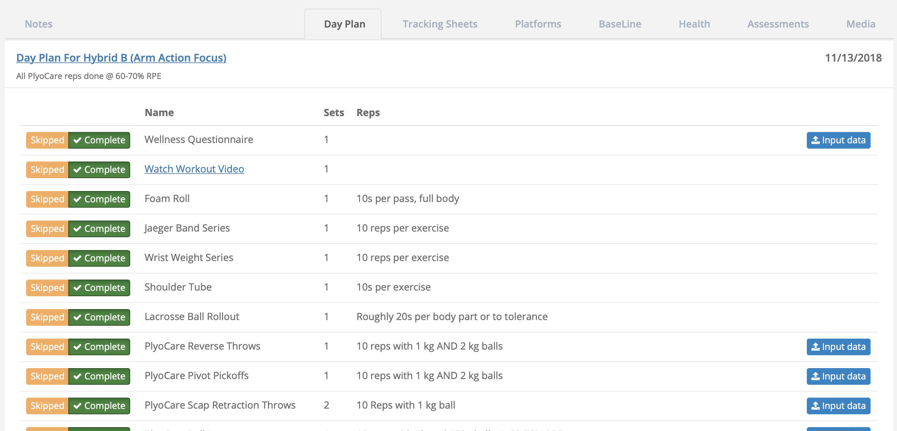
This is an overload-specialized drill that is a simplified version of the pivot pickoff. It is designed to help the athlete feel as though the elbow is dominating the pickup phase of the throw rather than the hand. It allows the athlete to drive the elbow back to create scap retraction on the throwing side, which can also help him hold counter rotation better.
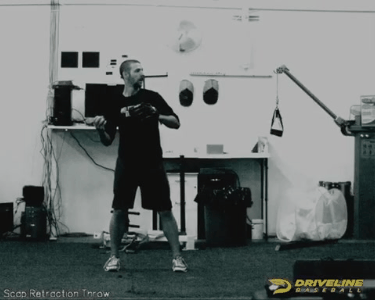
With greater scap retraction, this athlete could work his arm up into the driveline phase of the throw more efficiently, eliminating the forearm flyout we saw in his motion capture as well as the low shoulder-abduction issues. We also had him start a bit more supinated with his hand during pivot pickoffs to help further influence scap retraction.
Third Training Block – High-Intent Work
After adequate time to on-ramp sufficiently and periodic high-speed video retests, we moved into high-intent work. We primarily worked with two high-intent days a week: Plyo Ball ® throwing at 100% RPE and pulldowns.
At this point, the athlete had not been on a mound for quite some time. We decided adding some moderate intensity mound work into his programming would beneficial.

This meant that after completing his high-intent work, he would move to the mound and throw anywhere from 10-15 fastballs at around 70-80% RPE. Velocity was capped and we used the radar gun to monitor intent. This would get him back on the mound, effectively shortening any mound-blending phase that is usually necessary, and helped better blend the new, more efficient movements to the slope.
Fourth Training Block – Pitch Development
We transferred to the mound completely in early January. The earlier mound work afforded us the opportunity to focus on a variety of pitch-development initiatives during this training block.
We made one final change to his Plyo Ball ® work. We saw he was struggling to control his center of mass appropriately. His back foot was not staying anchored, and he was not able to stay in his rear hip. Early extension can prevent the glute from being the primary driver of pelvis rotation.
To attempt to address this, we added in some modified drop steps to his Plyo Ball ® routine to help sequencing and get him to hold tension in the rear hip longer.
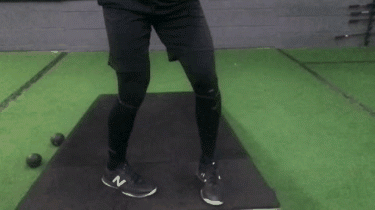
We cued him to rotate the lower half as fast as possible and for the back foot to feel as though he were spreading the floor—a similar cue we use in the weight room. Ideally, we see a slightly more vertical shin angle, but this was a good starting point.
Velocity on the mound was now as high as 93.9 mph. We felt confident that we could move to pitch design and attempt to optimize the rest of his arsenal.
Even pitch design relies heavily on the data we collected during his first few days in the gym. We do a baseline mound assessment where the athlete throws a short bullpen, usually on their fifth day in the facility. We collect velocity readings and capture pitch metrics with Rapsodo for each pitch type. This information would end up informing our pitch design sessions in the lab months later.
Most of the time was spent on his slider since it would be the primary breaking ball and has the highest usage percentage behind the heater. Looking at baseline data, we saw his slider was extremely inconsistent.
The plan was to create a slider with extremely low spin efficiency. Get as close to a pure gyro as we could. This would kill lift on the pitch, and since he didn’t throw his breaking ball with above average raw spin, it would allow gravity to do the work. Some simple trial and error with the Edgertronic really helped speed the process up. Explaining to the athlete what we needed the ball to do, spin like a bullet in this case, really seemed to be all the cueing necessary.
Motion Capture Retest Findings
After five months of training with us, this athlete went through a motion-capture retest. We usually do these retests with athletes every six weeks depending on the individual trainee, but for this athlete, it made sense to wait until he was back on the mound.

This time around, we see a much more efficient arm action. Forearm flyout is no longer present as elbow flexion is now 110 degrees at foot plant with a maximum average of 125. Shoulder abduction is better as well. He is now at about 86 degrees at foot plant and moves to around 90 at ball release.
Scap retraction was greatly improved. We now see 43 degrees of horizontal shoulder abduction at foot plant. This is a significant difference from his initial assessment. Getting good horizontal shoulder abduction like this also helps the athlete hold counter rotation in the upper half more effectively. Scap load allows for t-spine extension, which is critical in allowing the scap to tilt. This helps transfer energy upward from the trunk to the shoulder as it goes into external rotation.
Overall, this athlete went from having some significant issues to a pretty clean and efficient arm action.
Here is a look at his initial assessment (red) and his retest (green) overlaid:
So how did we do?
It didn’t happen overnight. But check out that new arm action
– more elbow flexion, arm gets inside 90 degrees (82 degs ➡️ 110 degs) ✅
– more scap retraction into foot plant (10 degs ➡️ 43 degs) ✅Not seeing the pronounced forearm flyout from earlier. pic.twitter.com/h2o8a145qP
— Anthony Brady MS, CSCS (@BaseballFreak_9) March 1, 2019

In the lower half, we were looking to get the hips open earlier. In his initial assessment, the hips were extremely closed. In his retest, the pelvis is more open at foot plant. This is going to help facilitate better lower half rotation and sequence his pelvis and trunk more efficiently.
Lower half and sequencing changes.
It’s not much, but it’s enough. on the right, we can see that the hips are opening just a bit earlier into foot plant, about a difference of 20 degrees, which is enough to facilitate that lower half rotation. pic.twitter.com/hzAHjUWi86
— Anthony Brady MS, CSCS (@BaseballFreak_9) March 1, 2019
Returning to Competition
Leading up to facing hitters, he had been working around 90-92 mph and touching 93 mph, but we weren’t sure what to expect during live at-bats.
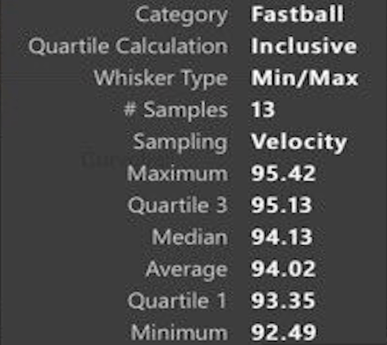
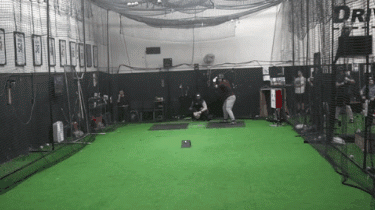
The above image is a screen grab from this athlete’s Trackman data from his first live at-bats in the facility. You can see he averaged 94 mph and touched 95 mph. Fastball velocity was living well above the 88.6 mph mark, which he averaged last season.
You can see below that the slider movement profile and pitch metrics we wanted the athlete to work within were something he was able to replicate against a hitter.
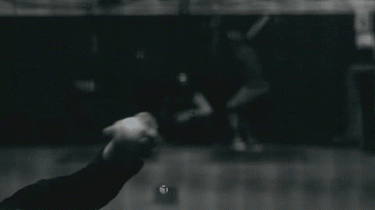
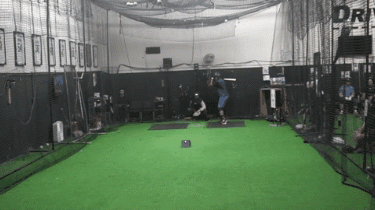
He eventually reported back that spring training was going well and he had touched 96 mph in a spring training game. Perhaps more importantly, he was feeling great and recovering exceptionally well between appearances.
Wrap Up
Biomechanics Breakdown time! Showing off the power of a fully integrated assessment process that utilizes biomechanics data to drive programming decisions
Got a spicy assessment to retest success story for ya, courtesy of @billhezel.
Red = assessment (Oct)
Green = retest (Feb) pic.twitter.com/r4uVbn469W— Anthony Brady MS, CSCS (@BaseballFreak_9) March 1, 2019
None of these changes would have been possible without the initial assessment and the information it provides. It is deservingly the primary driver in determining how we build throwing programming for our athletes.
Having the ability to retest athletes to verify if positive changes have taken place is not only vital to our core training methodology but also helpful in validating its effectiveness. It also demonstrates how important communication is among departments when training athletes. This is executed extremely well at Driveline. Our high performance team and skill coaches communicate regularly to pair skill and strength/mobility work appropriately. This was certainly the case here.
Player development is not simply teaching a pitcher a slider or getting him to deadlift. Those are simply small pieces to it. Development truly starts with an assessment. Without a comprehensive initial assessment and an integrated approach to training encompassing all departments (medical, skill, strength, and R&D), athlete results will be limited.
Building out systems that help facilitate this approach is essential for any organization that prioritizes development. Getting an assessment is great. Uncovering what deficiencies an athlete has that prevent him from moving well or performing at his optimal level is certainly important. However, the athlete needs individualized programming that targets those inefficiencies and an organization that can support him throughout its execution.
Written by Pitching Coordinator Bill Hezel
Comment section
Add a Comment
You must be logged in to post a comment.
Frederick Pauly -
Great info!!! For a “layman” what motion analysis product would you recommend…..something under $3,000?
Driveline Baseball -
Frederick- The Sony RX100 IV can do some pretty cool things for slow motion use. It is much cheaper than the Edgertronic but it does have a learning curve. You cannot add any other lenses to it either. We don’t use many apps like Coach’s Eye or HUDL but we do use a lot of iPhone slow motion video. The big key is knowing what you are looking for. The 4d Motion sensors could be something to fit that budget. You could use these and supplement it with video work.